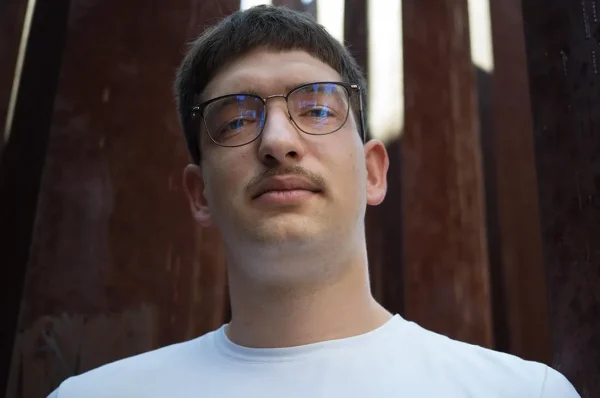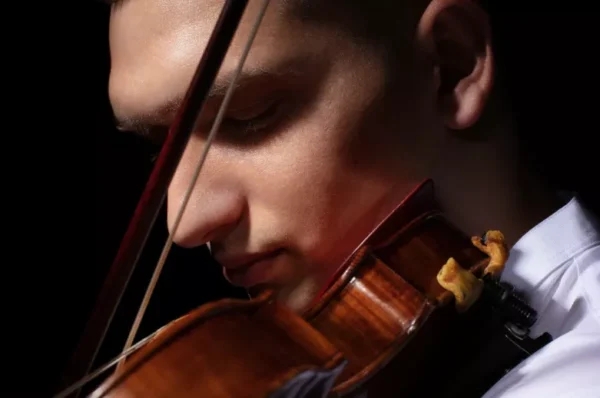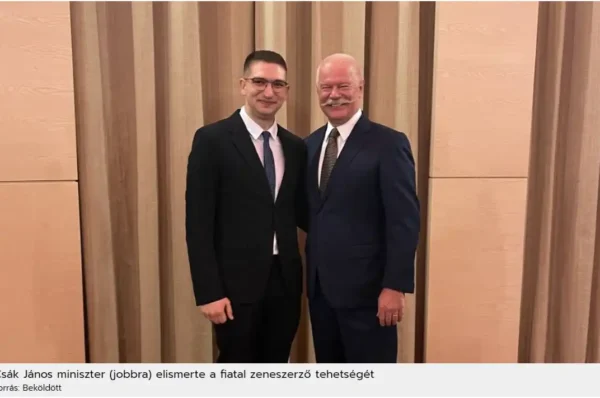The premiere of Le Devleske’s mass in the Lováry language, composed by Patrik Gergő Oláh at the request of Cardinal Péter Erdő, Primate, was held in the Szent István Basilica on September 1. The classical piece of music prepared for the International Eucharistic Congress was an explosive success.
The four-movement mass is the Downtown Franciscan Chant; the chamber orchestra of the National Philharmonic Orchestra, Grazioso; It was performed by dulcimer player Rózsa Farkas and two vocal soloists, Nikoletta Szőke and Nikolas Takács, under the direction of Alpaslan Ertüngealp, a conductor and pianist of Greek descent from Turkey who lives in Hungary.
The importance of the presentation of Le Devleske (To God) was indicated by the expected appearance of the ecclesiastical and civil dignitaries who came to the event, as well as the full house formed by the “affected”, interested believers, curious music lovers and the multitude of spontaneous visitors, which was confirmed by the sincere and enthusiastic celebration of the work . Cardinal Péter Erdő, Primate, participated in this evening not only as the leader and host of those coming to the upcoming congress, but also as the initiator and main propagator of this Roma Mass. The presentation was presented by the President of the Republic János Áder and his wife, Anita Herczegh; Canadian Cardinal Gérald Lacroix and Nigerian Cardinal John Onaiyekan, as well as Budapest Mayor Gergely Karácsony also listened.
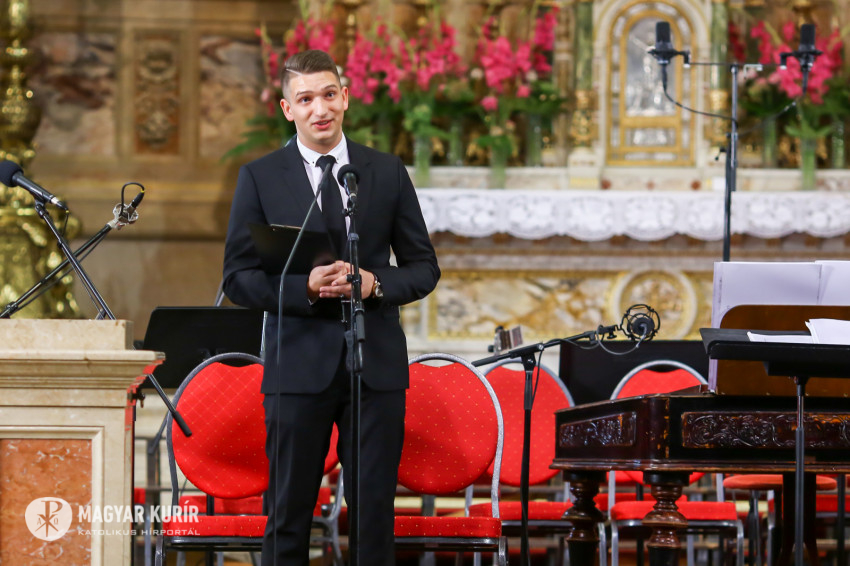
The concert was preceded by three short speeches. Oláh Patrik Gergő – who received the Andor Neszlényi prize, awarded annually to the most talented composer students of the Academy of Music, on that very day – talked about the honorable invitation. According to him
the work and this festive occasion also represent a kind of new starting point for gypsies.
While writing this mass proclaiming peace, his main inspiration was the Gypsy hymn, especially its two lines: “God, have mercy on us, / Do not let our people suffer any longer”.
He recalled that at the age of thirteen he was able to play in the basilica as a violinist in the orchestra from Salgótarján; now his dream has come true, that after ten years he can now be here as a composer. He expressed his hope that with his work he could build a spiritual bridge between people.
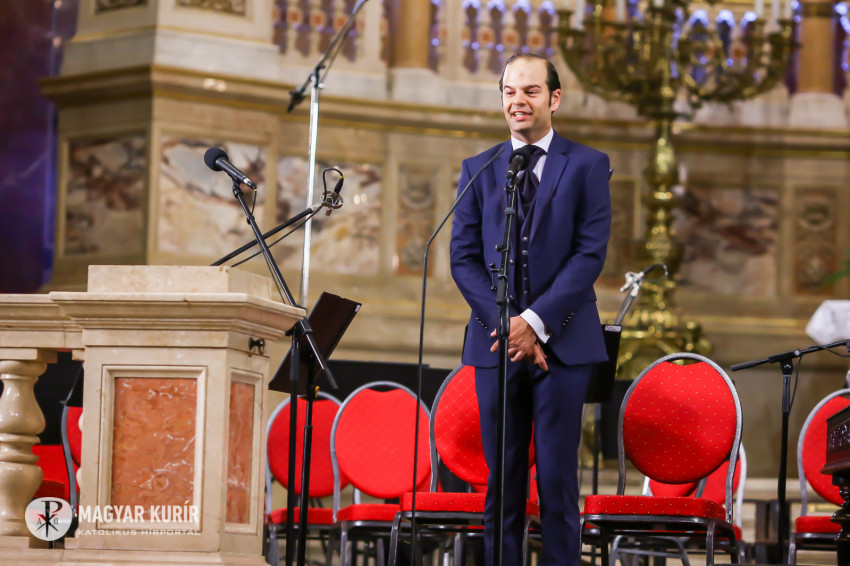
The artistic director of the project, György Lakatos, also highlighted the historical moment in his “foreword”: with the translation of the Bible into the Lovári language and the birth of this mass, a people with a troubled fate was given the opportunity to present its cultural values in this way.
This initiative is more than a mission, imbued with a sense of responsibility not only for the Roma, but for all of humanity.
Composers hope that their works are not meant for one day, but for eternity.
Music is the only means of communication that knows no boundaries: it penetrates from heart to heart.
This thought was continued by the Turkish-Greek conductor of the premiere, considered a “milestone”, Alpaslan Ertüngealp, who lives in Hungary, for whom the “muse”, the art of the muses, music is the all-pervading, connecting and unifying harmony.
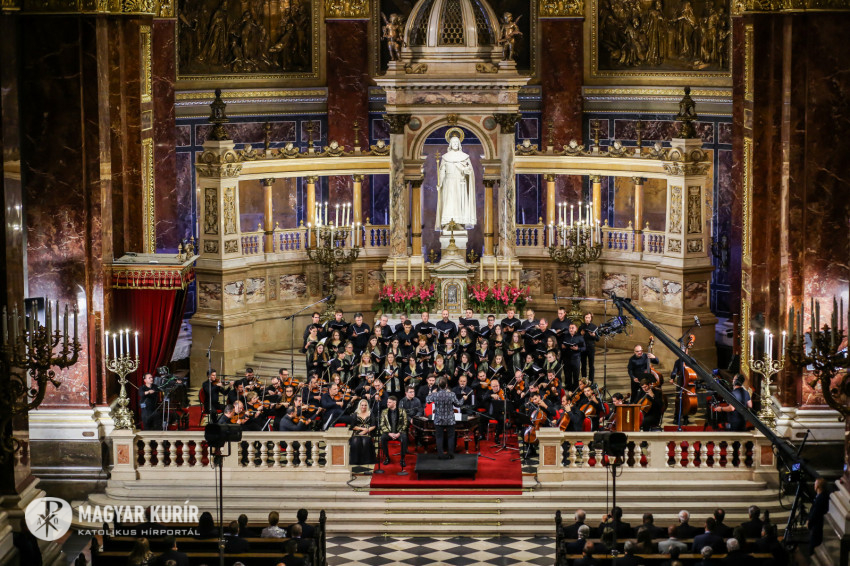
Only a quarter of an hour long, Le Devleske confirmed what the author and the admirers of this musical breakthrough said; there is no doubt: an important work that will last forever was born. In the days before the show, Patrik Oláh described his work as follows in the interview with him: “Le Devleske is a four-movement. First up is Kyrie. Perhaps this is the most classically conceived item. As Bartók wrote: motifs known from folk songs can be processed in several ways. This is what I did in Kyrie: I essentially composed it from tiny motifs taken from gypsy music. The second movement: the Gloria. This is a faster part, it presents the music of European gypsies, especially the Hungarian and Balkan versions. Sanctus is the third movement, which I connected with an interesting aspect, Russian gypsy music. I think it was very suitable for the message of »You are holy«. I wonder what the students will think about it. The last movement – slower than the previous ones, with a larger volume – is Agnus Dei;the two singers and soloists contribute to this: Nikoletta Szőke and Nikolas Takács. I hope to be able to give a real cathartic experience. The dulcimer appears in each movement, sometimes with a more prominent role, and sometimes as an accompaniment, remaining in the background. In Agnus Dei, I tried to mix the church character, gypsy music and my own, individual voice, this whole mix in such a way that it fits the genre and style represented by the soloists. I tried to make the entire mass popular in the noblest sense of the word.”
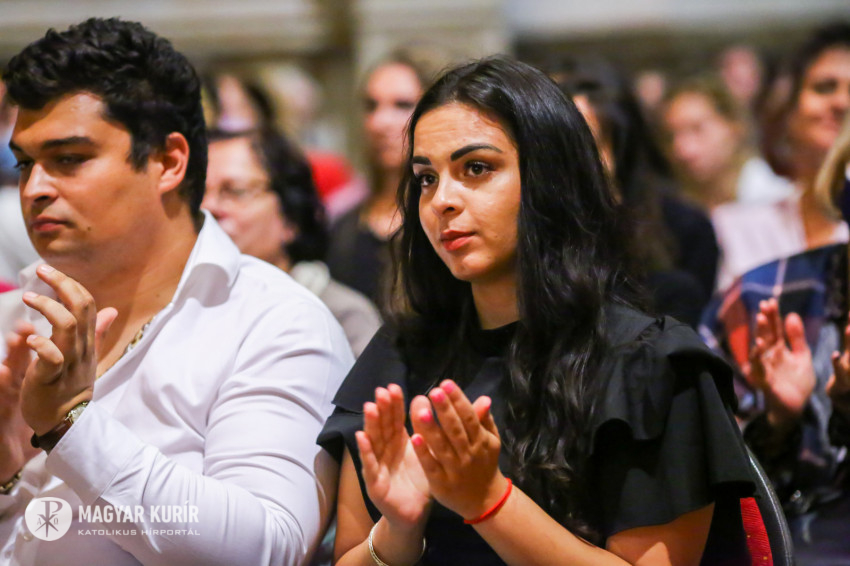
I am immediately surprised by the restrained, disciplined, dignified start, the pure elevation of the Kyrie choral movement reminiscent of classic oratorical works. The recorded and incorporated gypsy motifs line up with absolute naturalness, take shape and merge in some kind of higher, ethereal harmony. The language, the specialty of Lovári, the fact that there would be something very different here, does not seem to be the case. Of course it’s beautiful. As if the mass were in Latin; or in any other language which the song, the music, in its order, elevates.

Throughout the mass, the dulcimer is “only” an accompanying instrument: its subtlety gives it a special color and tone, and is “acoustically” part of the couleur locale. The light, dancing tone of the Gloria and then the Sanctus does not dilute the composition either. This kind of virtuosity, “popular character” may remind us of Brahms’s Hungarian dances, Liszt’s rhapsodies, and then also hints at something “close to klezmer”. The playfulness of the mass, manifested in rhythmic and atmospheric contrasts, reminds us of Orff’s Carmina Burana, but the author balances the sacred and the profane in such a way that even while “dancing and having fun” we do not stumble into the completely secular.
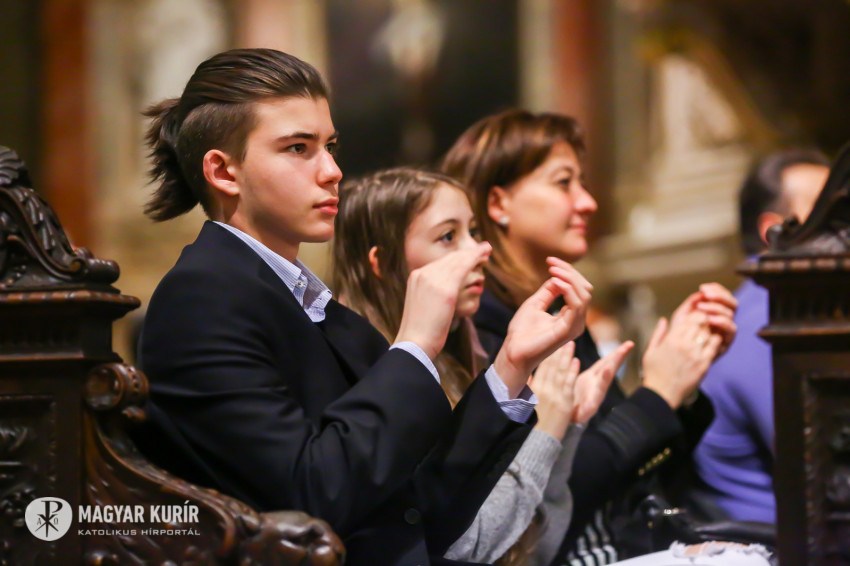
Just as Kyrie is moving, so is the closing Agnus Dei, but in a different way: the former with its “traditional” spirituality, the latter with its effective structure, almost film music emotionality. With the melancholic, painfully beautiful, bravuraly varied melody sung by the two soloists separately, then together, and finally with the choir, it gives life to the hope of meeting, and foreshadows the catharsis of reconciliation with each other and with God.
Author: Tamás Pallós
Photo: Attila Lambert
Hungarian Courier
The original article is available at: https://www.magyarkurir.hu/hirek/vilagpremier-budapesti-szent-istvan-bazilikaban-bemutattak-le-devleske-lovari-nyelvu-miset
The article can be downloaded: Világpremier a budapesti Szent István-bazilikában_ bemutatták a Le Devleske lovari nyelvű misét _ Magyar Kurír – katolikus hírportál


